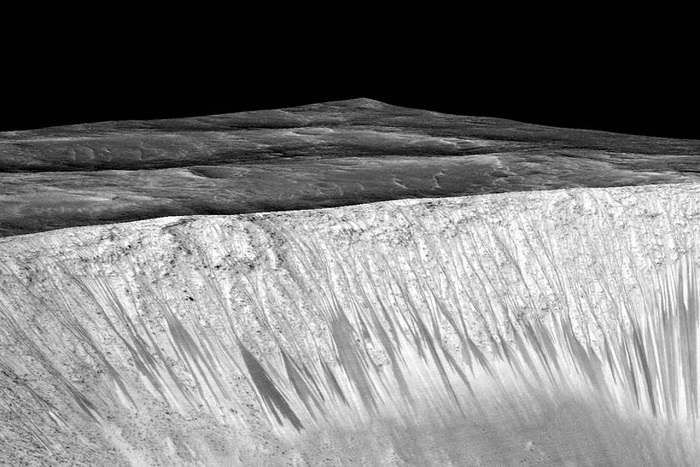Mysterious tracks on Mars may be formed by boiling water, study shows

Pictures taken from orbit have found evidence that the streaks are produced by flowing water, but with Mars so parched in modern times, scientists have struggled to explain why the features grow so large.
To find out what might be happening on the planet, Marion Massé at the University of Nantes and her colleagues used an environmental chamber to mimic the low atmospheric pressure found on Mars. The thin shroud of gas that surrounds the red planet means that the atmospheric pressure on Mars is half a percent of that found on Earth.
They showed that water seeping through sediments just beneath the surface boiled with such violence that it propelled dust grains off the ground and into small heaps that eventually collapsed in minor avalanches.
The process could play a role in the formation of streaks on Mars, said Massé, whose study appears in Nature Geoscience. While water seeping through the sediment will turn the ground dark, the violent vaporisation blasts lightly-coloured dust off the surface, revealing darker ground underneath.
All of which makes for much larger streaks. “If you have boiling water, jumping grains and these avalanches, you get something much, much bigger than with water alone,” said Susan Conway, a co-author on the study. When the water freezes in the winter months, the streaks are covered over by the fine layer of dust that gradually builds up.
The source of the water that makes the streaks is unclear. It may condense out of the Martian atmosphere as pure water, or rise up as salty brines from subsurface reservoirs. The scientists ran tests on both types of water, and found that pure water boiled more intensely and produced larger avalanches.
Wouter Marra at the University of Utrecht said the rapid boiling of water just beneath the Martian surface could explain other geological features on the planet’s surface.















































